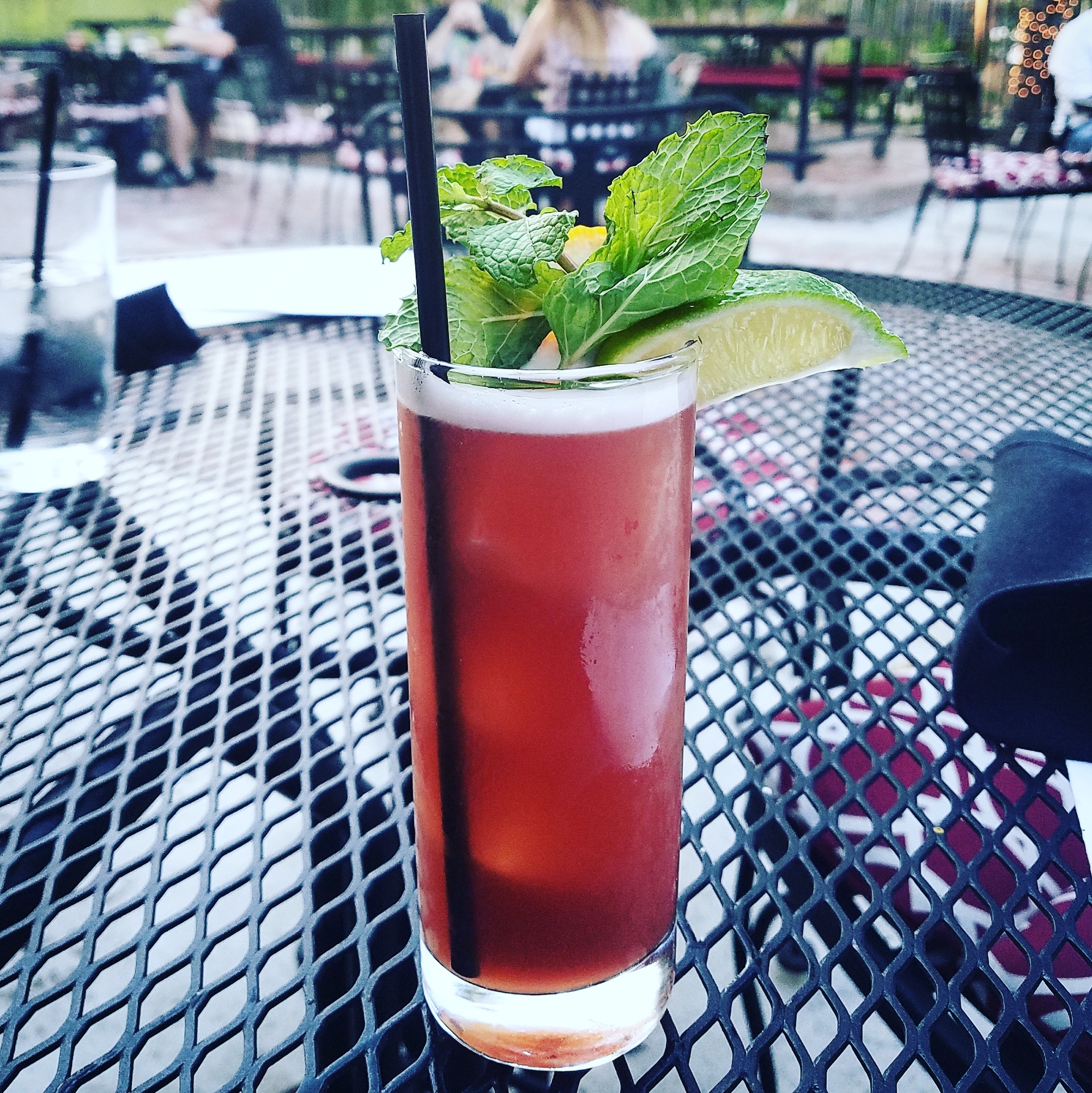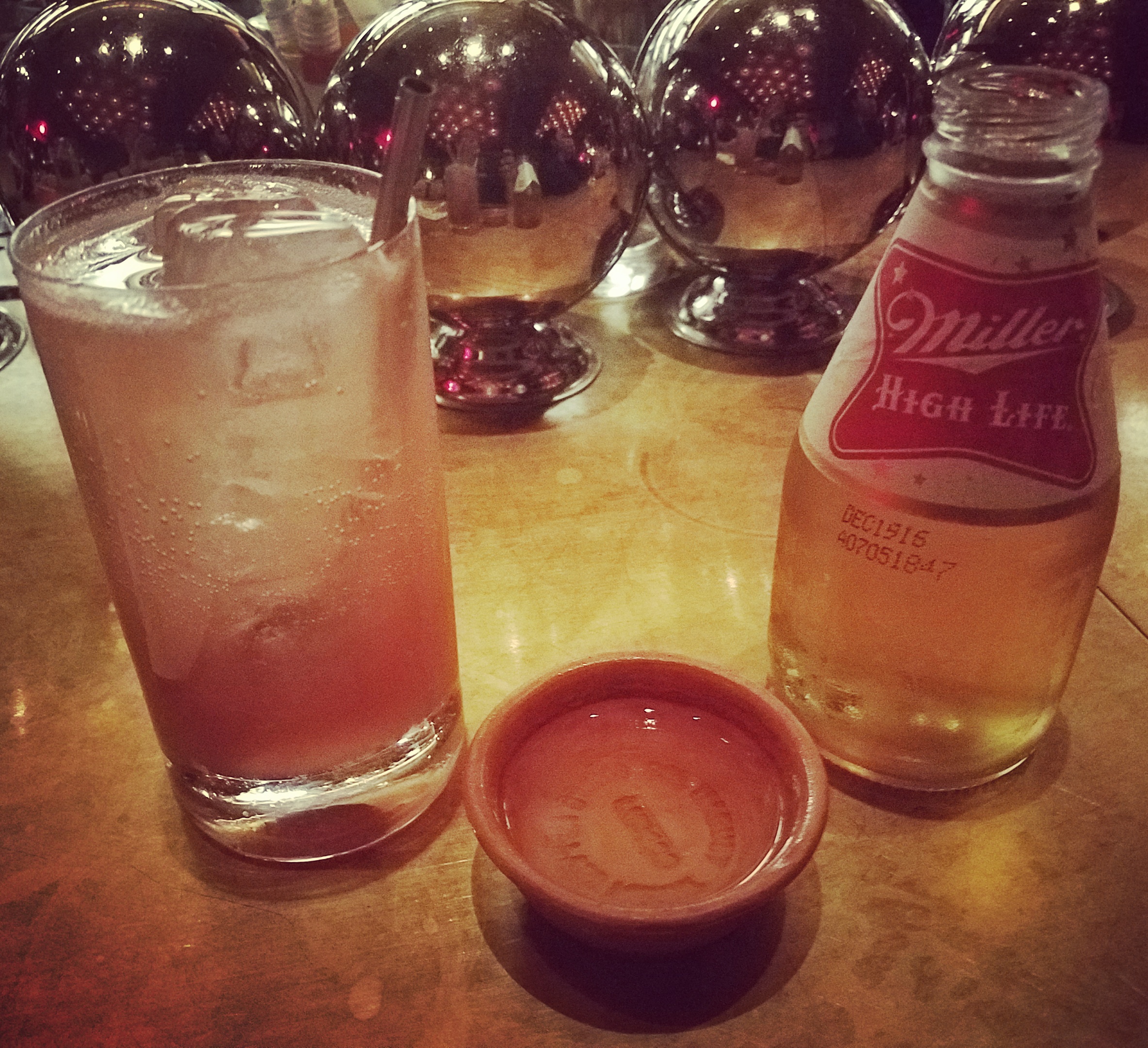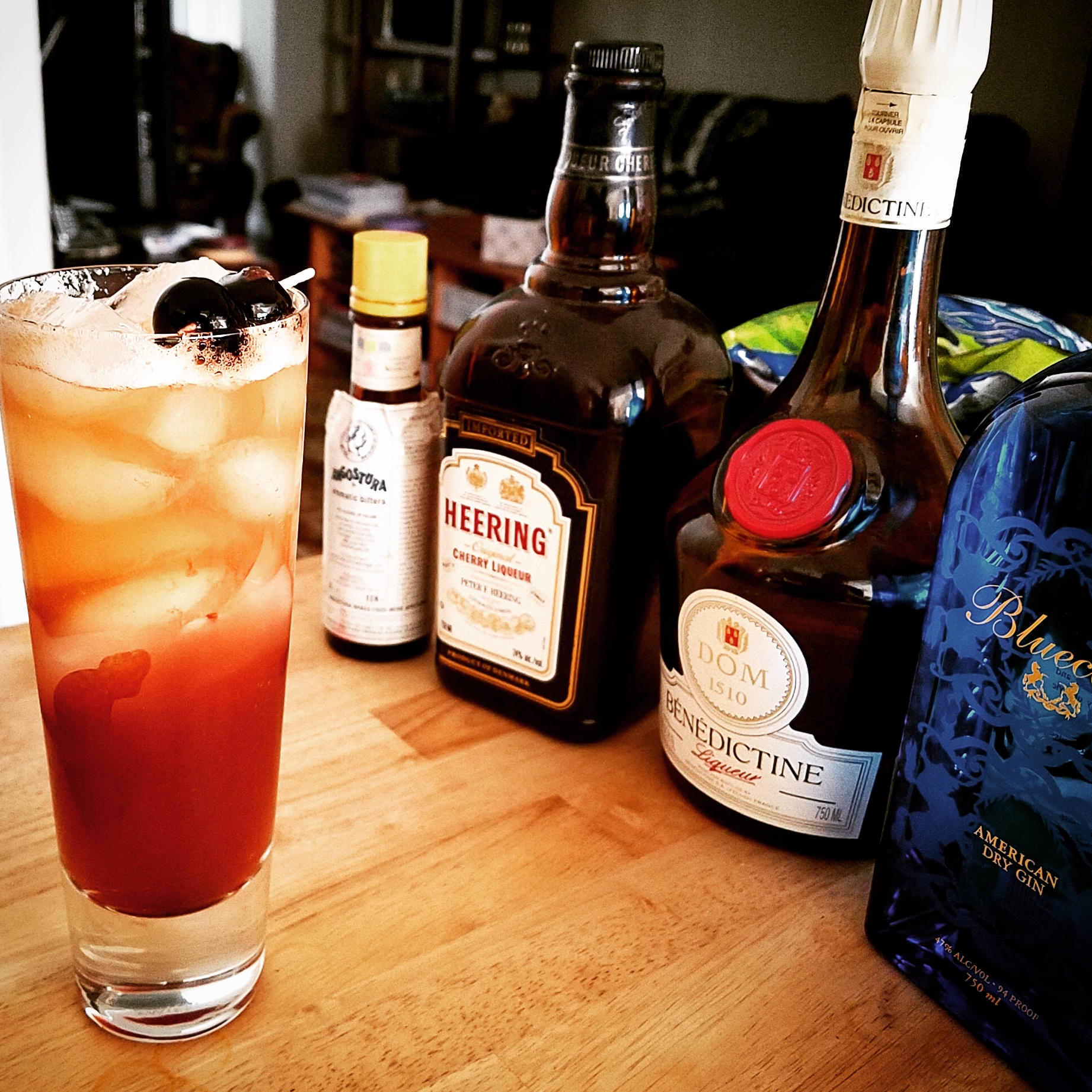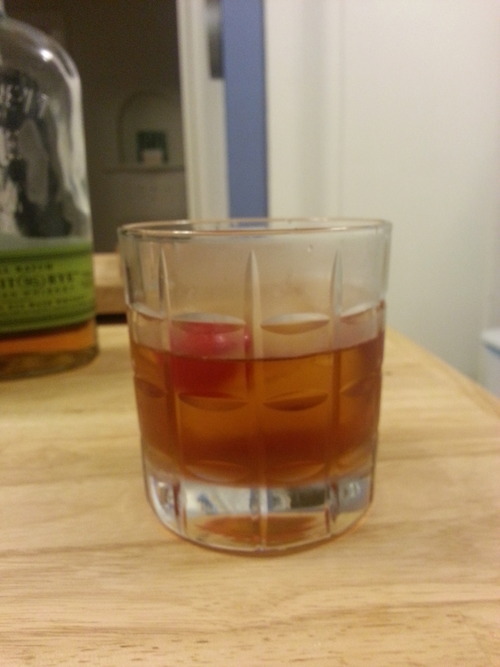
The Singapore Sling is the Rashomon of cocktails: Everyone remembers it differently. Like a rumor that starts at one side of the table and wildly mutates by the time it comes back round again, it’s a tasty tale whose twists and turns vary depending on who’s doing the telling.
How is it still considered a classic?
Because despite its many tweaks – “The Singapore Sling has taken a lot of abuse over the years,” wrote tiki master Jeff Berry in his book Beachbum Berry Remixed – it’s managed to stay delicious no matter how it’s interpreted. Even gonzo journalist Hunter S. Thompson considered it a favorite.
But somewhere along the line, the century-old drink attributed to bartender Ngiam Tong Boon of Singapore’s Raffles Hotel lost sight of its simpler beginnings, becoming a tropical mishmash of seven ingredients or more – and a headache for bartenders, which may be why you rarely see it on bar menus. “I remember Sasha (Petraske, founder of the classic New York City bar Milk and Honey) was not a fan,” says Chad Solomon of Dallas’ Midnight Rambler, who worked with the late cocktail legend. “But people loved drinking it. He was, like, ‘It’s got too many damn ingredients!’ ”
It’s a misfit of a drink, a gin-powered cocktail that muscled its way into the tiki canon through luck and guile, disguising itself in pineapple and grenadine. But while its more dignified origins faded in the process, two Dallas bars – Industry Alley and Midnight Rambler – are breathing new life into the Sleeping Beauty that’s been there all along.
**
Imagine two actor brothers born in close succession. They look just enough alike, and their names are similar enough, that they’re often confused with each other. The older brother teaches the younger one all he knows, but the younger brother’s easier disposition makes him more likable than his rugged, reserved sibling. And when the younger’s career veers from drama into comedy, making him a star, the family name rises to fame with him.
That seems to be the story of the Singapore Sling, whose sweeter flavors and catchier name propelled it through the thick and thin of cocktail lineage rather than its older brother, the Straits Sling. A sling is a type of drink, at its base a simple mix of spirit, sweetener and water. As cocktails historian David Wondrich observed in his book Imbibe!, it’s “a simple drink in the same way a tripod is a simple device: Remove one leg and it cannot stand, set it up properly and it will hold the whole weight of the world.”
The Straits Sling, born sometime in the late 1800s, was just that: A mix of gin (spirit), sweetener (Benedictine, a honey-sweet herbal liqueuer) and carbonated soda (water), plus lemon and bitters. But its defining flavor was cherry – in the form of kirsch, a dry cherry brandy.
The original Singapore Sling – at least as well as anyone can figure out – was basically the same drink, except that it used sweet cherry brandy instead of dry and subbed lime as the citrus. That’s the Singapore Sling you’ll get if you order the classic drink at Midnight Rambler in downtown Dallas, and a few dashes of Angostura make all the difference, giving depth to what would otherwise taste like an off-kilter black cherry soda.
Adam McDowell includes the mix in his entertaining and recently published Drinks: A User’s Guide, whose characterization is hard to argue with: “Here’s the correct recipe; ignore all other versions like the meaningless static they are.”
Ingredients
1 oz London dry gin
1 oz cherry brandy
1 oz Benedictine
1 oz lime
3 d Angostura bitters
Club soda
Instructions
Stir in a Collins glass. Garnish w/Maraschino cherries
You’ll also find the drink on the inaugural menu at Industry Alley just south of downtown, where owner Charlie Papaceno digs its less-is-more simplicity. “It’s like with French cooking: Here’s the mother sauce,” he says. “Here’s what we work from.”
But of course Papaceno had to tweak his version just a little. Rather than using equal parts, his recipe boosts the gin and tones down the liqueurs, with just a squeeze of lime. The drink is tart and a bit Scotchy thanks to its signature ingredient, Cherry Heering – not the summery cool pineapple drink the name usually calls to mind, but a leathery, autumn-ready gin-and-tonic.
“So, it’s like, to take it back,” Papaceno says. “Somehow it’s just gotten so tricked up.”

Until Wondrich tracked down the recipe above in a 1913 Singapore newspaper, no one really knew what the standard was for sure. By the late 1920s and early 1930s the rumor was a good ways down the table and already starting to morph; even the Raffles Hotel itself touted an “original” recipe in the 1930s with pineapple and grenadine, flowery additions that nonetheless endeared it to the wave of tiki that was just starting to emerge.
Before long the drink with the catchy name became a game of eeny meeny miny mo, something everyone did but felt free to put their own spin on. “Of all the recipes published for this drink, I have never seen any two that were alike,” wrote David Embury in The Fine Art of Mixing Drinks (1948).
Trader Vic’s Bartender’s Guide (1947) included two versions; so did Gary Regan’s The Joy of Mixology (2003), listing the neglected Straits Sling recipe as “Singapore Sling #1” and offering a second that included triple sec.
“The Singapore Sling is a perfect example of the kind of drinks that came from outside the world of tiki establishments and took up residence on tiki menus everywhere,” wrote San Francisco bar owners Martin and Rebecca Cate in Smuggler’s Cove: Exotic Cocktails, Rum and the Cult of Tiki (2016). The legendary Trader Vic, they wrote, included it on his first menu under the category, “Drinks I Have Gathered from the Four Corners of the Globe.”
Here’s a typically involved recipe, the one I favored for a while, from The PDT Cocktail Book: The Complete Bartender’s Guide from the Celebrated Speakeasy (2011):
2 oz. pineapple
1 ½ oz gin
½ oz Cherry Heering
½ oz grenadine (I use pomegranate molasses)
¼ oz Cointreau
¼ oz Benedictine
¼ oz lime
Angostura bitters
Shake with ice and strain into a chilled Collins glass filled with ice. Garnish with a cherry and a slice of pineapple.
Yep, that’s a lot of moving parts for one drink. No wonder Wondrich once wrote: “The Singapore Sling is one of those complicated drinks that taste better when you don’t have to make them.”

But, you might be saying, what about the Straits Sling? Isn’t it being neglected all over again?
Not anymore, thanks to Midnight Rambler, where mixmaster Solomon has revived his own version of the drink with a wry literary nod.
Even before he began learning the craft, Solomon had the Singapore Sling on his radar after reading Hunter S. Thompson’s Fear and Loathing in Las Vegas in high school. “(Thompson) was describing sitting poolside at his hotel with a Singapore Sling, a side of mezcal and a beer chaser,” Solomon said. “I was, like — what’s a Singapore Sling?”
Then Solomon happened into the budding cocktail renaissance underway in New York City in the early years of the millennium, working at classic bars like Milk and Honey and the Pegu Club. In 2004, Ted Haigh gave a nod to the drier Straits Sling in his book, Vintage Spirits and Forgotten Cocktails – “but if you make it as Ted as written,” Solomon says, “it’s a terrible drink. Virtually undrinkable.”
Egged on by cocktails writer Martin Douderoff, one of his Pegu Club regulars, Solomon decided to see how he could improve on the drink while keeping its historical accuracy. By early 2006, he’d hit on a Benedictine-less version that used both dry and sweet cherry brandies – kirsch and Cherry Heering. It appeared on the Pegu Club menu later that year as the Solomon Sling.
Late this summer, as Solomon prepared Midnight Rambler’s fall menu, he knew he wanted to incorporate seasonal stone-fruit flavors, but not in an overly sweet way. When one of his bartenders suggested he reincarnate the Solomon Sling, he thought,“Okay. But let’s have some fun with it: Let’s serve it Hunter S. Thompson style and miniaturize it.’”
And that’s how you’ll find it on Rambler’s current menu – served “Gonzo-style” and slightly downsized with a side of mezcal and a Miller High Life pony. It’s a delicate drink, slightly sweet with a lush cherry finish – and did I mention it comes with a side of mezcal and a Miller High Life pony?
The sibling slings are finally having their day, and there’s little to fear or loathe about it.




